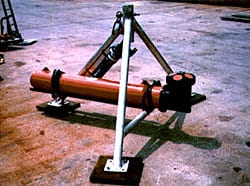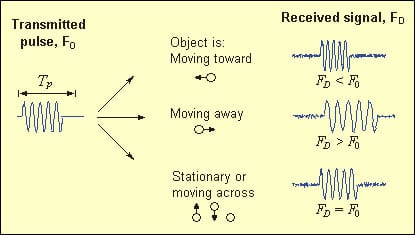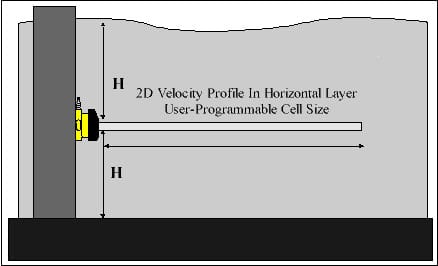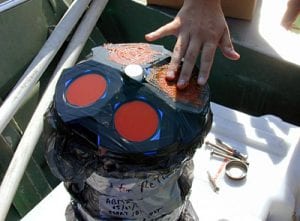Acoustic Doppler Current Profiler (ADCP)
What is it and why do we use it?
An Acoustic Doppler Current Profiler, or Acoustic Doppler Profiler, is often referred to with the acronym ADCP. Scientists use the instrument to measure how fast water is moving across an entire water column. An ADCP anchored to the seafloor can measure current speed not just at the bottom, but also at equal intervals all the way up to the surface. The instrument can also be mounted horizontally on seawalls or bridge pilings in rivers and canals to measure the current profile from shore to shore, and to the bottoms of ships to take constant current measurements as the boats move. In very deep areas, they can be lowered on a cable from the surface.
How does it work?
The ADCP measures water currents with sound, using a principle of sound waves called the Doppler effect. A sound wave has a higher frequency, or pitch, when it moves to you than when it moves away. You hear the Doppler effect in action when a car speeds past with a characteristic building of sound that fades when the car passes.
The ADCP works by transmitting "pings" of sound at a constant frequency into the water. (The pings are so highly pitched that humans and even dolphins can't hear them.) As the sound waves travel, they ricochet off particles suspended in the moving water, and reflect back to the instrument. Due to the Doppler effect, sound waves bounced back from a particle moving away from the profiler have a slightly lowered frequency when they return. Particles moving toward the instrument send back higher frequency waves. The difference in frequency between the waves the profiler sends out and the waves it receives is called the Doppler shift. The instrument uses this shift to calculate how fast the particle and the water around it are moving.
Sound waves that hit particles far from the profiler take longer to come back than waves that strike close by. By measuring the time it takes for the waves to bounce back and the Doppler shift, the profiler can measure current speed at many different depths with each series of pings.
What platforms are needed?
ADCPs that are bottom-mounted need an anchor to keep them on the bottom, batteries, and an internal data logger. Vessel-mounted instruments need a vessel with power, a shipboard computer to receive the data, and a GPS navigation system (so the ship's own movements can be subtracted from the current data). ADCPs have no external read-out, so the data must be stored and manipulated on a computer. Software programs designed to work with ADCP data are available.
Advantages and limitations?
Advantages:
- In the past, measuring the current depth profile required the use of long strings of current meters. This is no longer needed.
- Measures small scale currents
- Unlike previous technology, ADCPs measure the absolute speed of the water, not just how fast one water mass is moving in relation to another.
- Measures a water column up to 1000m long
Disadvantages:
- High frequency pings yield more precise data, but low frequency pings travel farther in the water. So scientists must make a compromise between the distance that the profiler can measure and the precision of the measurements.
- ADCPs set to "ping" rapidly also run out of batteries rapidly
- If the water is very clear, as in the tropics, the pings may not
hit enough particles to produce reliable data - Bubbles in turbulent water or schools of swimming marine life can cause the instrument to miscalculate the current
- Users must take precautions to keep barnacles and algae from growing on the transducers.
Sources:
- Frank Bahr, research specialist in the Physical Oceanography Department at WHOI
- Jim Culter, program manager of the Benthic Ecology Department at Mote Marine Laboratory
- SonTek: www.sontek.com/
- RD Instruments: www.rdinstruments.com/products.html - particularly the ADCP (BroadBand) Practical Primer




